Whether you’re cruising the scenic stretch of Interstate 26 in Madison County, cresting the Swannanoa Gap on Interstate 40 or sitting in traffic on the Bowen Bridge, it’s hard to live in Western North Carolina without feeling the impact of interstate highways.
Ever since the National System of Interstate and Defense Highways was launched in 1956, those roads have drastically changed the communities they pass through — or don’t. For some, the “coming of the road” has brought greater economic opportunities and access to the wider world; for others, it’s meant losing their homes and indelibly changing their environment and way of life.
And as the state Department of Transportation moves forward with plans for the long-awaited, much-debated I-26 Connector in West Asheville, a look at past interstate projects — and the changes they wrought — may offer insight into the issues now in play.
Pre-pavement days
Prior to the passage of the Federal-Aid Highway Act, which established the interstate system, traveling to or from the Southern Appalachians was a drawn-out, sometimes hazardous undertaking. Canton native Phillip Williams recalls the long trips his great-grandfather would take to peddle his produce and meats in Asheville. “It was a three-day affair: They would strike out the first day and camp in what is now Candler … get up before daylight the next day and take the load into Asheville, do his business, return to the Candler camp, spend the night and return to Cruso the next day.”
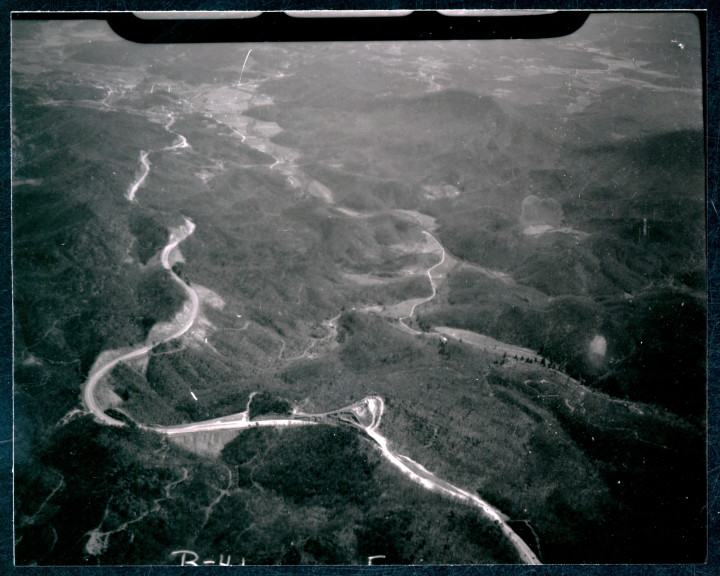
In his book The New Road, local photographer Rob Amberg quotes Madison County native J.D. Thomas as follows: “There wasn’t any paved roads, and if it was rainy weather and the ruts was real deep, you’d break a tire, you’d break an axle.” From his home in Sprinkle Creek, “It took all day long to go to Marshall.”
The introduction of two-lane highways such as U.S. 70 and U.S. 23 made access easier, but increased traffic and industrial shipping often created logjams in small towns along the route. Before I-40 was completed, “The main road to get to Knoxville was through Madison County,” says former state Rep. Ray Rapp, who also served three terms as Mars Hill’s mayor. “If you talk to folks from the ’50s and early ’60s, it was bumper-to-bumper traffic” going through Marshall.
Black Mountain, too, was “one of the huge traffic jams” back then, says Bob McMurray, executive director of the Black Mountain/Swannanoa Chamber of Commerce. “The ABC store used to be here where the visitor center is. They used to say you could be in traffic, go out and buy a bottle and be back in your car before the line moved.”
The stretch of I-40 through WNC wasn’t finished until the early 1980s; the same held true for I-240. And the “future” designation won’t be removed from I-26 between West Asheville and Mars Hill until the required upgrades, which aren’t slated to begin until 2022, are completed. (See “Down the Road: The Future of Future I-26,” May 20, 2015, Xpress.)
Interstate intrigue
Often, political pressures and maneuvering dictated the routes these roads would take. Interstate 40, for example, was originally supposed to “basically mimic 25/70 through Hot Springs and Newport [Tenn.],” says Amberg. “That was the better route, but there were political things going on that put it through the Pigeon River Gorge.”
And for those in the project’s path, the construction of I-40 often meant the loss of family property in an area where good farmland is scarce. Asheville native Wayne Caldwell says his wife’s family was forced to sell 5 or 6 acres of their Candler farm during the highway’s construction. “They weren’t happy about losing the property or the settlement DOT proposed for them,” the local author adds. “It was just quite disruptive.”
Williams was too young at the time to recall the particulars, but he remembers “hearing a lot of bitterness directed at certain families who were in the know about where and when the interstates would come, and hoodooed many poor families out of land at a cheap price,” only to sell it to the state at a premium.
The politically motivated route I-40 took also posed a host of engineering problems, most notoriously in the Pigeon River Gorge, where the highway crosses into Tennessee. Over the past few decades, numerous rock slides have injured — sometimes fatally — commuters navigating the narrow, twisting pass.
“There was always an issue of rockfalls there,” former DOT geologist Russell Glass told the Winston-Salem Journal in 2009. “We used to run a 24-hour patrol there to push rocks out of the way.”
A cut below the rest
Political intrigue was also at the center of the controversial Interstate 240 project, specifically the millions of cubic yards of rock removed from Beaucatcher Mountain to make the Beaucatcher Cut. First, an 11th-hour decision by the DOT to choose a cut rather than two three-lane tunnels made it possible for a local contractor to get the job. Second, whichever contractor won the contract would inherit the waste material: 300 million cubic yards of crushed granite. Third, several contractors who bid on the project also formed a real estate partnership that bought up steep mountain parcels on the north side of Tunnel Road. If any contractor belonging to the partnership won the bid, a substantial portion of the crushed granite would be trucked to those parcels, transforming them into buildable commercial real estate.
“Few events made such a visual impact on our consciousness and, at the same time, represented how political forces in this region work,” Asheville historian Rob Neufeld wrote in a 2009 timeline about the project.
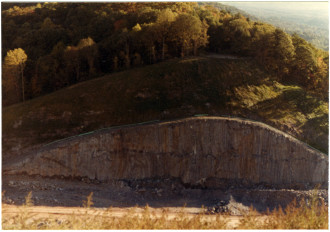
When it was announced in 1967, local environmentalists and other concerned residents launched a legal battle against the DOT that lasted more than a decade. Betty Lawrence, who helped spearhead the Beaucatcher Mountain Defense Association in the ’70s, remembers “spending my lunch hours going up to the law library on the 10th floor of the Buncombe County Courthouse and looking up cases” in an effort to halt construction.
“We got a thousand people up to Zealandia in October 1976 to protest the cut,” she says; the Tudor Revival mansion was built in 1908 for diplomat and businessman Philip Henry. One of those protesters was Fred Wolfe, the brother of acclaimed Asheville author Thomas Wolfe. “Fred was advanced in years but still going relatively strong,” Lawrence recalls. “He came up and gave a great speech, saying Wolfe was a mountain man, and he loved our mountains. … He’d say, ‘Don’t tear it down!’”
Despite those efforts, and Zealandia’s being listed in the National Register of Historic Places in 1977, the courts sided with the DOT, and by 1980, the massive gash through Beaucatcher Mountain was complete.
For Lawrence, the cut meant losing “some of the real magic of Asheville. I used to go up there and pick the wild red raspberries that grew all over. Asheville was a city surrounded by mountains, and now it’s a city surrounded by mountains with one great big gash.”
Nonetheless, she says, the battle over Beaucatcher Mountain was life-changing. “It taught me an awful lot, on several levels. I ended up going to law school in 1980, inspired in large part by my experiences trying to stop the DOT.”
Besides irreparably altering an Asheville landmark, the construction cut a swath through the working-class communities east of downtown, skirted the historic Montford neighborhood and plowed through West Asheville. Shortly after 240 was built, urban renewal mostly relocated those east-end communities, which local photographer Andrea Clarke documented extensively in images now housed in Pack Library’s North Carolina Collection.
“There was a densely populated, mixed-race neighborhood all around First Baptist Church,” says Caldwell, who serves as the church’s historian. “There was a lot of stuff down in that little valley; people lived and worked there. Now we have a hotel and a YMCA and a great big parking lot for the church.”
Mountain majesty
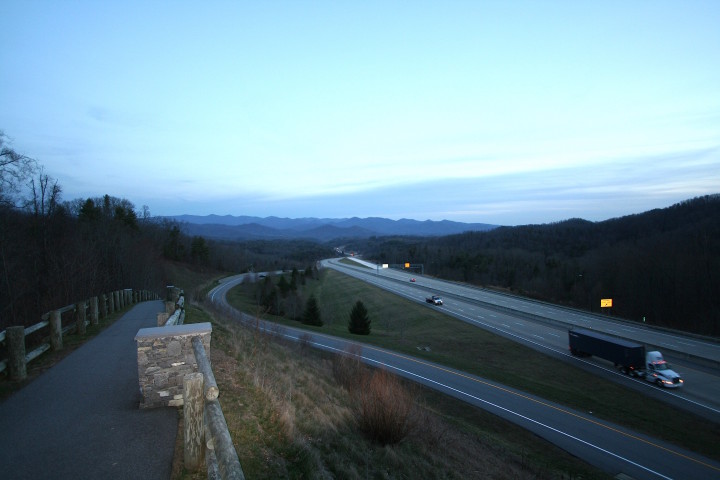
North of Asheville, construction of the nine-mile stretch of future I-26 between Mars Hill and the Tennessee border began in 1992. The sparsely populated portion of Madison County presented highway engineers and residents alike with an entirely different set of challenges. Former DOT design engineer John Lansford says it was “by far the largest project, both in cost and in sheer size of the work involved” that he’s been involved with.
The largest earthmoving project in state history, it includes the highest bridge in North Carolina, which runs through Buckner Gap 125 feet up. “Trout streams had to be avoided or bridged; access to property had to be maintained where possible,” Lansford recalls. “The construction had to be feasible … and impacts to the natural terrain and scenery had to be considered throughout.”
For Madison County residents, however, the road was a double-edged sword, according to Rapp. “People want the economic benefits, the ease of access to modernity and everything that brings,” he points out, “but you can’t stand there and watch them dynamite a mountain and not feel a certain set of angst about what you’re doing to the environment, what you’re about to bring into the region.”
Amberg, a longtime resident whose book documents the road’s construction, sees the project as an icon of greater changes in Madison County. “In a way,” he says, laughing, the county “has been brought into maybe not the 21st century but certainly the 20th. Much of it I really feel good about; at the same time, there is an element of what a former girlfriend used to call ‘dis-ease.’ This was slow Madison County, and suddenly, it explodes to include all these different things. The road becomes sort of symbolic of that.”
Give and take
Perhaps the biggest changes wrought by the interstates in WNC are those that can’t be easily seen.
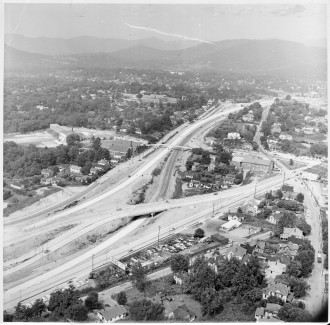
“I can’t help but think of Billy Edd Wheeler’s song ‘The Coming of the Roads,’ where Billy sings, ‘I can’t help but blame your going on the coming of the road,’” notes Rapp. “I think of where the current Welcome Center is [on I-26 near the Tennessee line], which is one of the most beautiful welcome centers in the United States. But in the process, it buried what had been a longtime apple orchard.”
And while I-26 has given residents and travelers alike easier transit through the area, says Rapp, it can also blind commuters to the communities they pass through. “It’s a way through the region, not necessarily stopping here,” he says. “Go through Greensboro, for example: You’re racing right through shopping districts and neighborhoods, and you’re oblivious to what those neighborhoods are.”
Communities not directly in an interstate’s path, however, may have a hard time attracting visitors at all. “There were a lot of small businesses like restaurants, stores, gas stations and motor courts that are no longer around after the interstates were fully open,” Williams recalls. “The interstate system pretty much killed the railroads, the downtowns, the old city neighborhoods and the mom and pop businesses — and probably contributed to the demise of farming as a vocation/lifestyle.”
Black Mountain, says McMurray, has prospered thanks to its close proximity to I-40, but nearby communities such as Marion have had a harder time grabbing a piece of the pie. “They have a nice downtown,” he notes. “They’re just so far away from the interstate.”
And as interstates crept into the region, Marshall, which had been a stop for travelers as far back as the old Buncombe Turnpike of the early 1800s, soon found itself a backwater. “The old 25/70 now is almost a preservation corridor,” says Rapp. “When Interstate 40 was constructed,” he maintains, it “turned Marshall into a ghost town. That was a long history there that was disrupted.”
To ensure that the local culture wouldn’t be overwhelmed by the new wave of development triggered by I-26, a conscious effort has been made to draw visitors off the interstate and into the county’s further reaches, says Rapp. In Mars Hill, “We developed the visitors center so we could encourage people to not just pass through Madison County but to stop and visit. We did it with a sense of intentionality, to keep those things alive that we cherished, and we tried to do it in a way that wasn’t just resistance to change.”
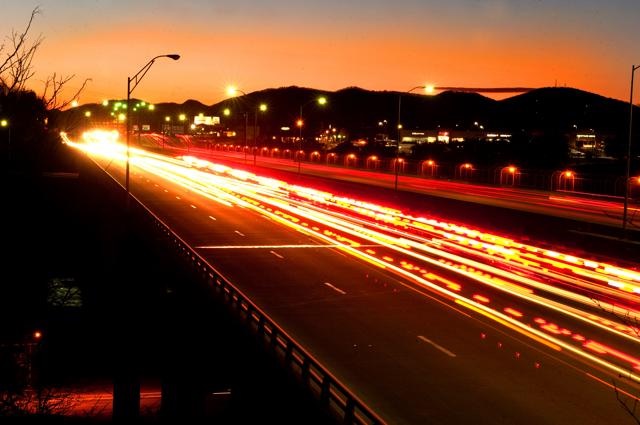
Malfunction junction
The idea of straightening out “malfunction junction,” as many residents call the intersection of I-26, I-240 and I-40 in West Asheville, is nothing new. The I-26 Connector project has been in the planning stage since 1989, stalled by a series of delays due to funding issues and public concerns about the project’s scope and scale.
“The original time frame had construction finishing in conjunction with the opening of Interstate 26 through Madison County in 2003,” says Ricky Tipton, a construction engineer for the DOT’s Highway Division 13. As community members called for further study of alternative routes, however, “The project was slowed down so these concerns could be considered,” he explains.
The issues, says City Council member Julie Mayfield, include the project’s size and its impact on neighborhoods, city greenway projects and bike and pedestrian access to nearby streets. “What the city is really pushing for DOT to do is explore the flexibility and use of DOT plans,” notes Mayfield, who’s been involved with the connector through her work with the Western North Carolina Alliance (now MountainTrue). One big objective, she says, “is to turn Patton Avenue into a true urban boulevard and gateway to downtown.”
Last May, the DOT announced that it had finally settled on Alternative 4B, which calls for separating interstate traffic from Patton Avenue, building a new bridge linking future I-26 to West Asheville, and reconnecting the adjacent Hillcrest neighborhood to the highway.
With an estimated cost of $600 million to $800 million, the massive project could be completed sometime in the late 2020s, according to the agency’s webpage.
“We would anticipate about four years of construction time to complete each section,” Tipton explains. Over the coming months, “The department will continue to work to finalize the environmental impact statement. Once that’s complete, final designs can be completed, right of way acquired and then construction.”
Information about upcoming meetings, he adds, can be found at ncdot.gov/projects/I26Connector, and affected homeowners will be contacted by mail (see sidebar, “Community meetings on I-26 Connector”).
But 4B, says Mayfield, “still comes with a whole litany of concerns. It’s very important for people to understand that the city isn’t just blindly endorsing what DOT has done. We’re working very actively to minimize the impact of this project and make it a benefit to the city, rather than something that’s just happening to Asheville.”
And for the neighborhoods most likely to be affected, promises go only so far, notes activist Dewayne Barton of the Burton Street community. “At first, they were going to come through the neighborhood and plow through several homes. I think it was the community’s effort that really made DOT rethink that. Now, my focus has been what’s going to be their investment after the work is done?”
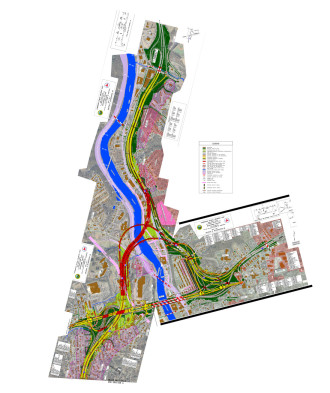
Back in 2010, he points out, the community generated a plan spelling out its needs “because we knew this expansion was coming. We’re looking at sidewalks, the streets being paved, solar panels on the roofs.”
Nonetheless, says Barton, neither the city nor the DOT has offered much in terms of concrete action. “On paper and on air, they’re saying they’re behind the community, but we’re talking about infrastructure — bricks-and-mortar type things. … A couple City Council members have shown interest, but where’s the visual project? A physical thing that a community can see and say, ‘Oh, it came through! They actually did what they said they was going to do.’”
In the rearview mirror
“Modernization is a force that is inexorable — it’s coming,” says Rapp. “The question with the I-26 Connector, just as we saw in Madison County, is how do we help preserve the things we cherish?”
Caldwell, meanwhile, says, “The human cost of progress is something that I think city and county and DOT officials don’t pay enough attention to. It’s like the Great Smokies park: It was a good thing, and I’m glad they did it, but we need to remember that there are people who are still bitter about it.”
For her part, Lawrence sees the continued community involvement with the connector project as an encouraging sign that residents are taking an active interest in how their city is shaped.
“I don’t think anybody’s efforts toward making the highway’s design better are in vain, even if they’re not successful,” she says. “It comes up time and again. This isn’t the only project we’re going to have to be mindful of.”
Mayfield, however, says residents frustrated by the seeming lack of progress need to be patient. “It’s a complicated project: You’re putting an interstate through a city. This thing is going to be here for decades, and we’re not going to have a chance to ‘fix’ it once it goes up. So we have to fix it before it goes up.”
Barton, meanwhile, calls on community members to stay involved, whether it’s “technical expertise to update our website, passing out fliers or calling City Council members and county commissioners and expressing their concerns.”
Long after the construction dust has settled, notes Rapp, the decisions made today will continue to affect the city and its residents. “It’s going to force us to redefine communities and community life in the region,” he predicts. “That’s going to happen in Asheville as it does in Mars Hill, as it does along these corridors. How is your neighborhood going to change when the road comes through? You have to begin those kinds of conversations about how you want to direct the change that’s going to come.”



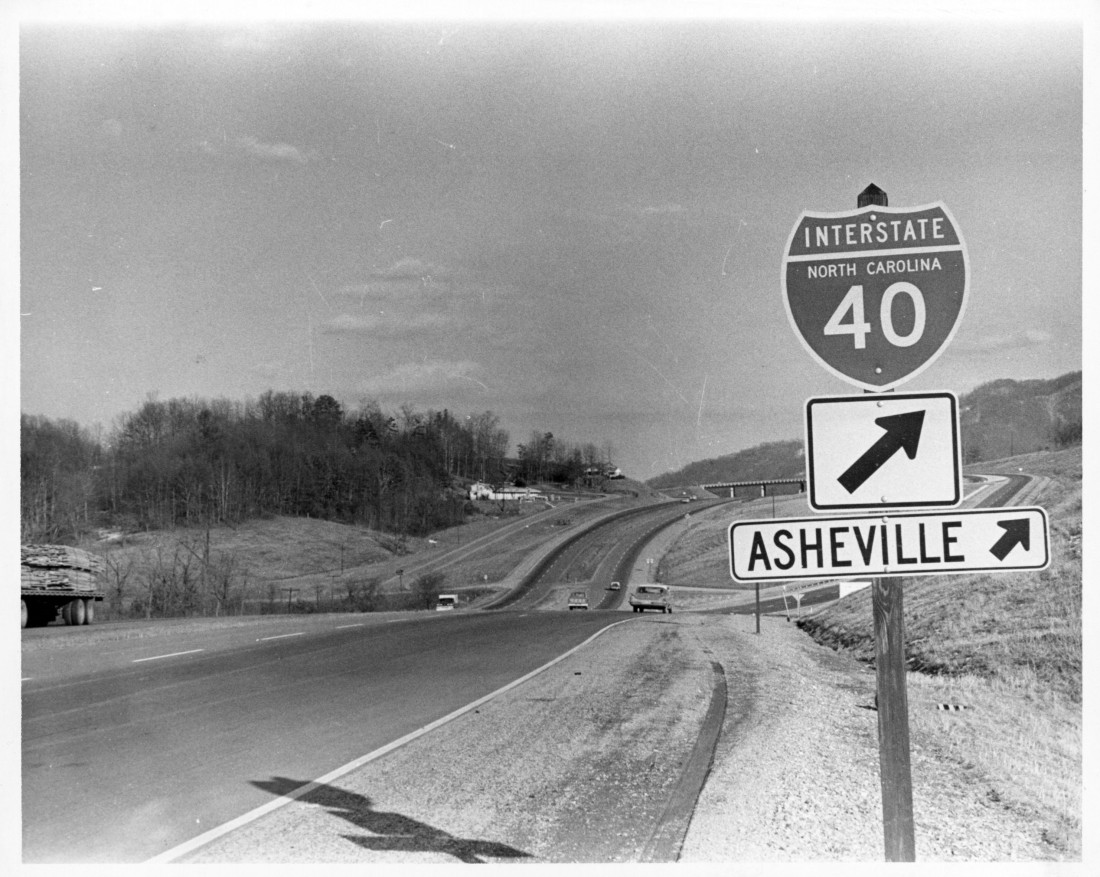
The more roads you build the more cars will come to fill them. The time as come to spend money on building alternative forms of transportation.
I have my fingers crossed that a George Jetson capsule car will be mine before I die. https://tinyurl.com/zgj3ccv
They might not fly yet but self-driving cars will help.
From some of the sights I’ve seen in these long many years I’ve had a Driver’s License, apparently there are those who believe their vehicles are self-driving now……
Also, forgot to mention–excellent, well-researched story, with some great pictures to go along with it. Kudos to Max Hunt. As the old saying goes, hard to navigate into the future without a true understanding of the past.
I could not have said it better Jay. This connetor thing is like connecting a garden hose to a fire hose. When it funnels down to no room available. Better testing for licensing to drive vehicles(see how Germany does it). Bottom line is this. 20 out of 25 questions correctly answered does not a good driver make!!!!!!
Jay, I couldn’t have said it better. This “connector” is going to be connecting a firehose to a garden hose, when it all funnels down(traffic in this case)it is going to be worse. How to solve this? Do what Germany does as far as licensing drivers. My quote on licensing in this state-“20 out of 25 questions, does not a good driver make.”
Yea I would like to see more driving training especially for teenagers, who stand a greater chance of dying in an automobile crash.
Quote from a local cop-“it pays to put stupid on the road”. If you look at the plans for this thing, its like, once they all get here, where are they gonna go. I drove as an uber driver last here and saw so many instances where the county and city “dropped the ball”. Promoting people to plan ahead would help. If the state would pay me to point out all the things lacking common sense out on OUR public roads, and to point out logical needed things, it would be a big help to the motoring public. I have reported and gotten the DOT to do several things, but if they can pay someone to do a %%^$% job, then why not pay for what I just mentioned???? Meanwhile, I highly recommend this for EVERY teenage driver.
ooos year not here and this is the link— https://putonthebrakes.org
Every new major road construction effort has to take into account the consequences of the last generation’s projects, especially when those projects are viewed collectively. Urban interstates carved up downtowns and almost always uprooted minority communities, sometimes under the auspices of slum clearance, sometimes just because it was cheaper to bulldoze those blocks.
This is where the memories of native and long-resident Ashevillians play an important role. Nobody’s around who remembers the days before the tunnel opened up the east of the city, but plenty remember when Beaucatcher Mountain wasn’t snaggle-toothed, or when Hillcrest wasn’t wrapped in interstate.
http://www.nytimes.com/1975/12/01/archives/open-cut-in-mountain-for-road-opposed-carolina-unit-opposes-cutting.html